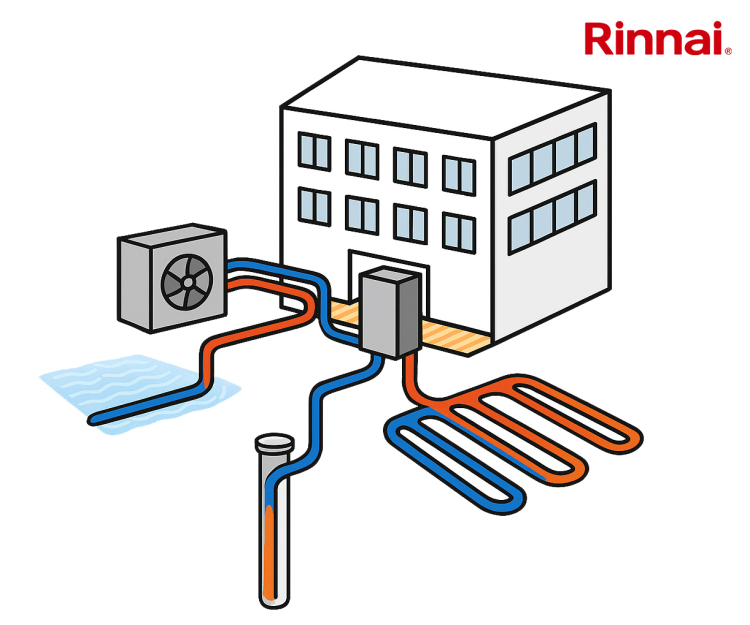19 May 2020
Waterman’s sustainability experts have delved into building services’ strategies and how these can dramatically reduce the lifecycle embodied carbon of a commercial office development.
According to the recent report from Waterman, a consultancy providing sustainable solutions for the property, infrastructure, environment and energy markets, buildings need to be designed to be flexible and adaptable for generations to come. They should no longer be left to become obsolete and demolished once they can no longer perform their function.
Ongoing maintenance and replacement account for 45% of whole life embodied carbon
The operational energy use of our buildings is progressively reducing as they are designed to become more energy efficient. But this is far from the full picture.
The lifecycle of mechanical, electrical and plumbing (MEP) systems and the choice of system for an office building have a significant impact on its overall embodied carbon. The London Energy Transformation Initiative (LETI) highlights that MEP services represent around 15% of the embodied carbon in a new office development:
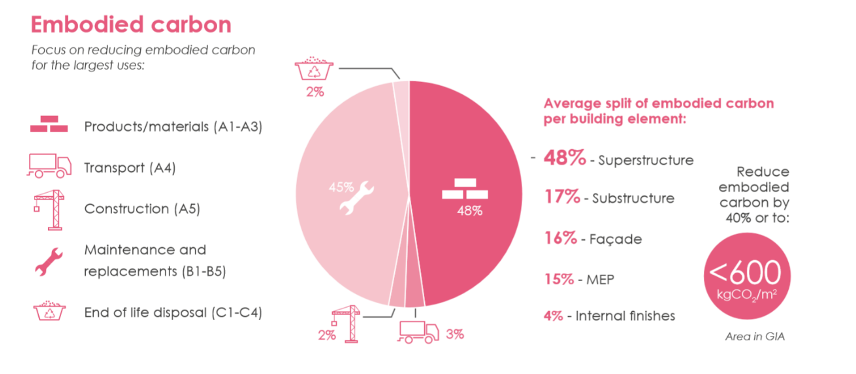
Picure: A graphic showing the proportion of embodied carbon in a typical office building’s lifecycle excluding operational energy
However, these components have an economic lifespan ranging from 15 to 25 years and this means the real impact on the building’s carbon footprint becomes much greater. LETI predicts that ongoing maintenance and replacement account for 45% of whole life embodied carbon and a significant proportion of this is related to MEP systems.
LETI also highlights that as buildings become more energy-efficient and operational energy reduces, the embodied carbon from construction, maintenance and replacement account for two-thirds of the building’s lifecycle carbon.
Old building stock not future proof
A large proportion of 1960s and 70s commercial buildings have been demolished as they were not adaptable enough to be rejuvenated – essentially they failed to accommodate modern working cultures and expectations.
With today’s focus on sustainability and reduction in whole life carbon, buildings are now being designed with longevity in mind. However, Waterman says that we still find ourselves in a situation where the MEP systems are replaced at least two or three times over the normal life of an office building.
The replacement of MEP systems is not just a question of lifespan. The continual retrofits and the churn of tenants in a building generally means substantial alterations.
How can we reduce building services’ embodied whole-life carbon against the tide of shorter leases and changes in workplace cultures?
Waterman’s sustainability experts have carried out studies to develop strategies that will assist developers in working towards net-zero carbon in their future developments. The focus has been to review which choice of air-conditioning systems has the least long-term carbon impact over a building’s lifecycle.
The study led by Mark Terndrup, Director of Building Services, analysed the embodied carbon associated with the initial installation of different types of air-conditioning systems and then added the embodied carbon associated with typical fit-outs, maintenance, repair and ultimately replacement.
Mark says: “It is evident that Under-Floor Air Distribution (UFAD) systems are one answer to the challenge of energy-efficient cooling whilst avoiding extensive whole-life carbon penalties. They have the least initial quantum of components installed and are far more favourable in carbon terms. UFAD means fewer physical components in the office space in comparison to alternatives like Fan Coil Units (FCU’s) and Chilled Beams.”
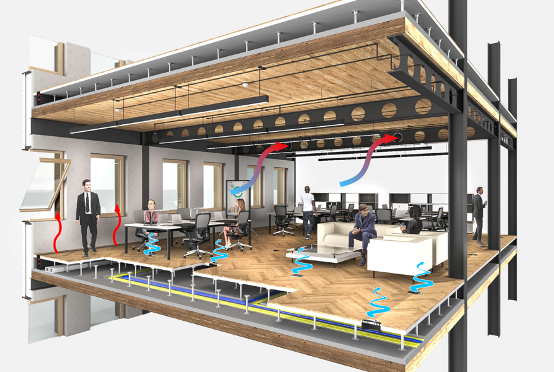
Picture: Graphic of a UFAD system
The UFAD solution, above, uses an all-air based cooling strategy without ductwork or terminal units in the office space cutting out the embodied carbon normally incurred through terminal units such as fan coil units or chilled beams. Instead the raised floor is used as a supply plenum with simple manually adjustable swirl diffusers set in the floor tiles. This strategy means that adaptation for cellularisation is quick and simple while maintenance is minimal, with no need for replacement of parts.
With a conventional solution such as Fan Coil Units, as much as 30-50% of the system ends up being removed or altered by tenants as part of the initial fit-out. This percentage increases significantly over the operational life of the building. The multitude of components need replacement every 12 – 15 years.
Under-Floor Air Distribution systems
UFAD systems require enhanced façade performance to limit solar gain in order to operate successfully. If designed correctly, Waterman says that this can achieve free cooling for up to 85% of the year, reducing the overall operational energy.
Mark Terndrup says that these UFAD systems fit all types of buildings. He said: “The UFAD solution can even work in tall buildings, a floor-by-floor air handling plant strategy can be adopted using up to 100% fresh air for free cooling. This solution minimises the central plant to free up space for amenity use at both roof and basement.”
“This is also beneficial for dealing with tenant churn. The floor by floor solution allows you to manage staggered leasing with minimal disruption, because each floor can easily be adapted to suit tenants as they come and go, or when their requirements change. This reduces lifecycle embodied carbon too!”
There is also a multitude of wellness benefits. The UFAD delivers more consistent thermal control and gives each occupant individual temperature control over their immediate area. The lower ventilation fan speed significantly reduces noise pollution and creates an overall quieter and more stress-free environment. The supply of air at floor level provides 20 per cent better ventilation in comparison to a ceiling-based HVAC system.
The naturally rising air moves suspended particles upwards and away from occupants, resulting in a superior indoor air quality. Whilst it is too early to talk about specifics yet, Terndrup is certain that we will have a renewed focus on our future designs post-COVID-19, not least from an air quality point of view.
Waterman maintains that UFAD isn’t the “be all and end all” but that it goes a long way to transforming the carbon footprint of our buildings.
Picture: Photograph of a large office building
Article written by Ella Tansley | Published 19 May 2020
Share
Related Articles
The Future of Carbon-Absorbing Paint – Q&A With Patrick Folkes | Graphenstone UK
Graphenstone is the most sustainably certified paint brand in the world. We spoke to Patrick Folkes, the hedge fund and smoothie entrepreneur who has brought the...
Read Full Article
World's First Climate Change Patient?
A woman in Canada has recently been the first to be diagnosed with health complications as a direct result of climate-change-induced weather experience. Dr Kyle Merrit...
Read Full Article
Why is Air Quality Important?
Last month was National Clean Air Month in the US. Why is air quality important?
The pandemic has brought consideration of clean air to the public eye, but the quality...
Read Full Article
Gothenburg Showcases Award-Winning Green Buildings
Green Gothenburg is inviting its travel-banned visitors to a virtual tour of its award-winning buildings, where the latest innovations in smart technology...
Read Full Article
Dalkia Completes Decarbonisation Scheme at Arup’s London HQ
The £3.1 million scheme to decarbonise Arup’s headquarters at 8 Fitzroy Street is now complete.
Dalkia has delivered the validation, detailed coordination,...
Read Full Article
Scrutinising MEP Systems to Unlock Carbon Savings in the Built Environment
Can the built environment unlock substantial carbon savings by scrutinising mechanical, electrical and plumbing systems?
Max Gibbens, Senior Environmental Consultant...
Read Full Article
The UK’s Largest Net-Zero Housing Development
Barratt Redrow is set to deliver the UK’s largest net-zero carbon housing development.
With 576 new homes, a new primary school, open space, community buildings,...
Read Full Article
BESA Commits to Global Pledge for Healthy Indoor Air
Alongside 150 other organisations, the Building Engineering Services Association has signed the Global Pledge for Healthy Indoor Air at the United Nations...
Read Full Article
Revolutionising HVAC – Reducing Emissions for a Sustainable Future
Luke Gorman from ABM explores the impact of HVAC on the environment and how facilities management now functions as a strategic ESG partner.
Luke graduated from...
Read Full Article
Building Research Establishment to Lead on Future Homes Standard Methodologies
The Building Research Establishment will work with the Department for Energy Security and Net Zero to develop both the Home Energy Model product recognition system and...
Read Full Article



.gif)
.gif)
.gif)






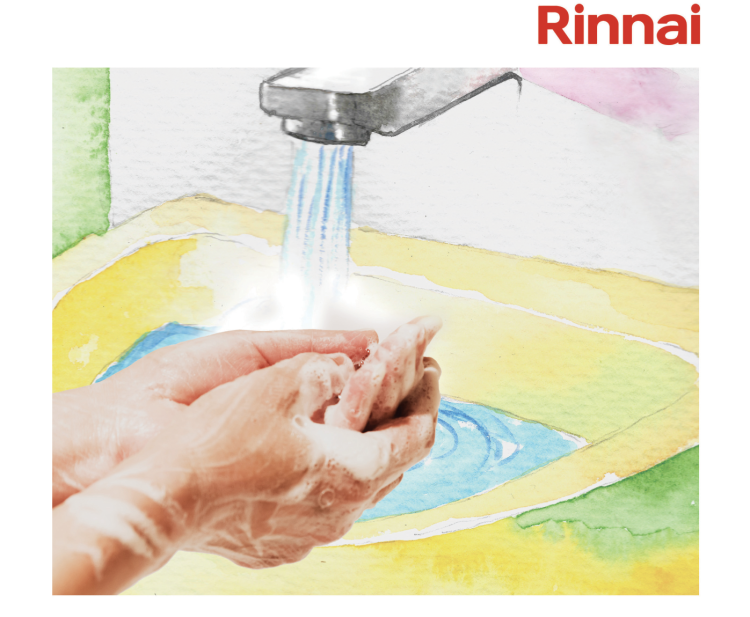
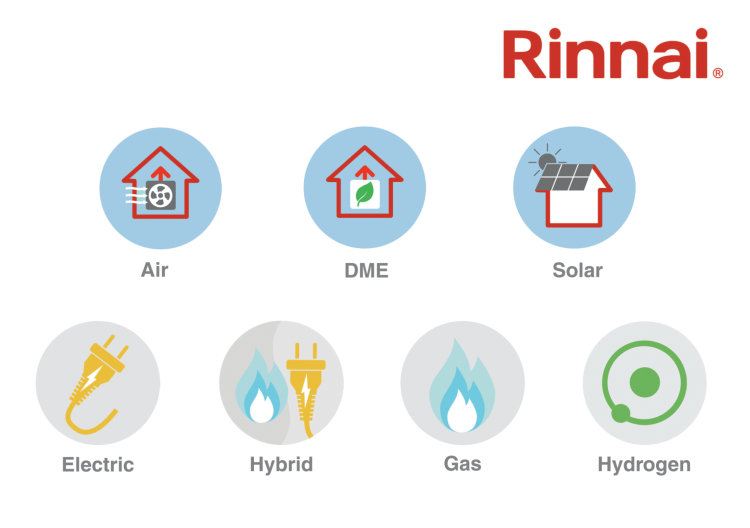
.png)
